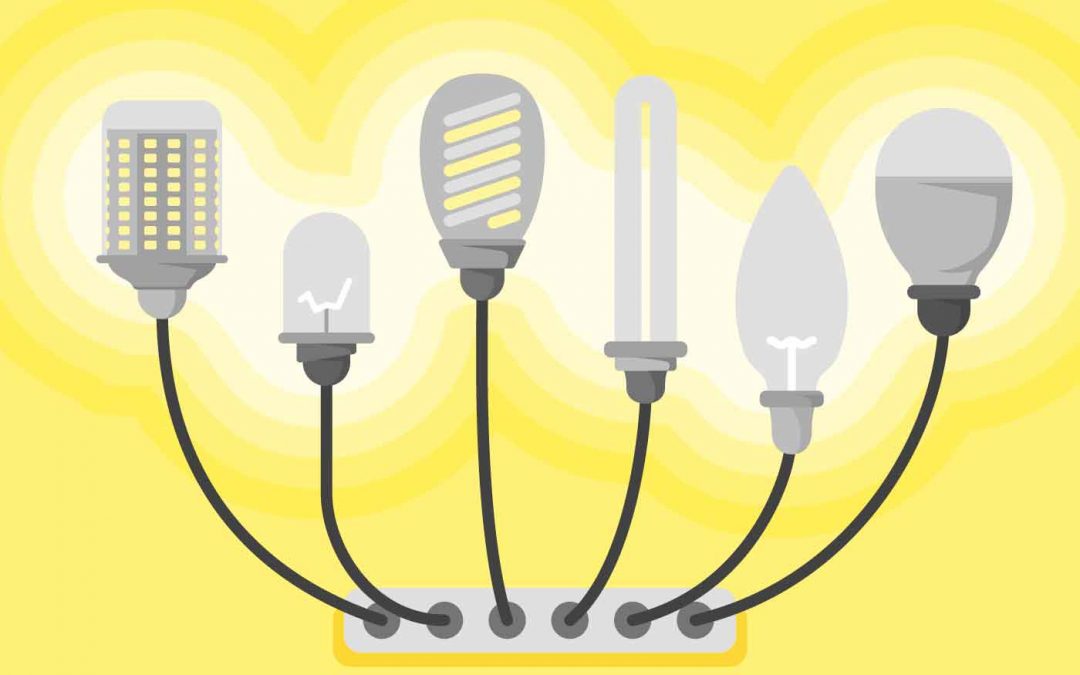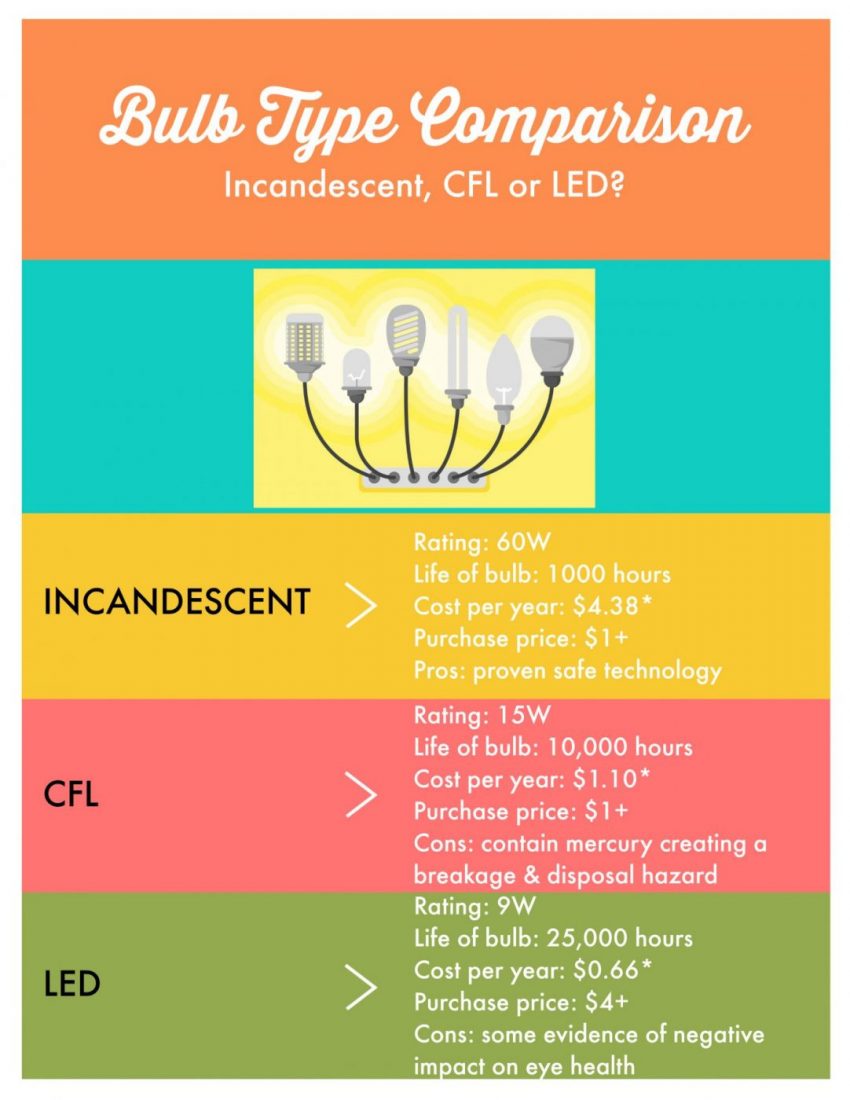Big Savings with LED Lighting
Which Type of Light Bulbs Should you Choose?
In these days of rising electricity prices it may be time for a whole home light bulb retrofit. With a quick look at the above infographic it quickly becomes apparent that significant savings are to be had by swapping out incandescent bulbs for LED lighting.
Incandescent bulbs are inexpensive to purchase but tremendously inefficient as they dissipate most of the energy they consume as heat.
The cost of running one 60 watt incandescent bulb for 2 hours per day at 10 cents/kWh, would cost $4.38 per year. The 15 watt compact fluorescent equivalent would cost $1.10 per year and the LED version comparable to the 60 watt incandescent would only cost $0.66! Now multiply that by the average number of bulbs in a home.
The average number of light bulbs in a home is 24 according to Natural Resources Canada’s Office of Energy Efficiency 2007 statistics. When you multiply the yearly dollar figures of the incandescent and LED bulb by 24 that’s when the savings opportunities really become obvious: $105.12 vs. $15.84!
While initially LED bulbs were quite expensive to purchase, they have in recent years come down in price and are now very affordable.
The advantages of LED lighting are clear:
- Extremely energy efficient compared to traditional light bulbs
- No toxic mercury risk like CFL
- Affordable
- Very long life if you purchase good quality bulbs (this may or may not apply to dollar store finds – caveat emptor)
Try a little experiment! Install each type of bulb one by one in a lamp and check how much power is being consumed using your Eyedro Real-Time Electricity Monitor. Saving electricity can be fun, saving money even better.
Ready to dig a little deeper into your energy usage?
- For an easy to use electricity usage calculator: energyusecalculator.com
- For a discussion on the topic of light bulb efficiencies: energy.gov

